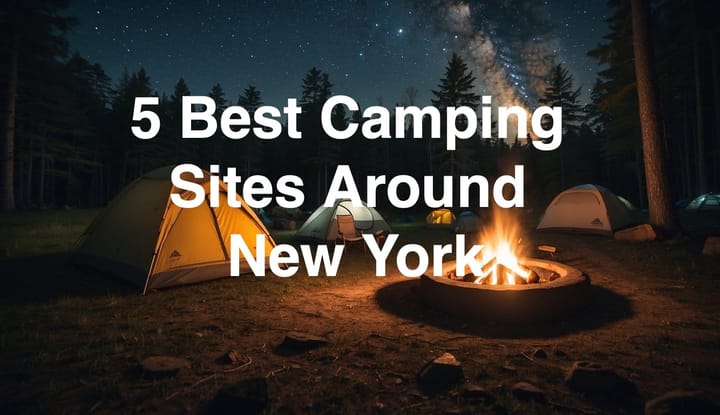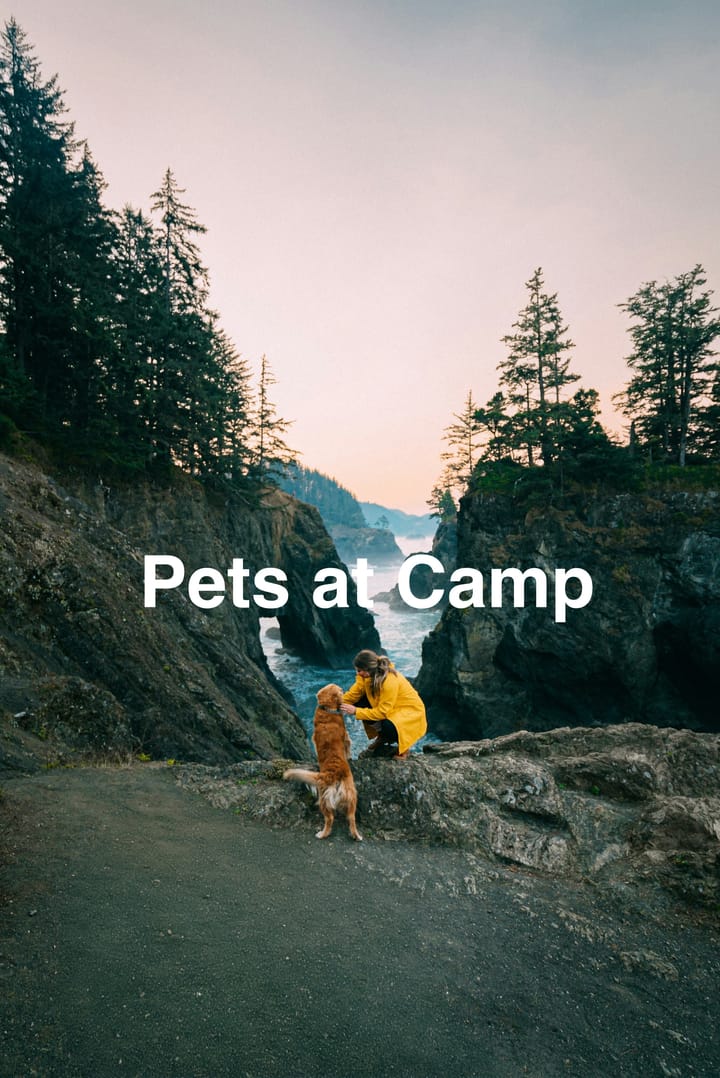Backyard Camping
Backyard camping is a fun and simple way to enjoy the outdoors without leaving the comfort of your home. It's an excellent option for families, friends, or individuals looking to experience camping without the travel or the need for an official campsite.

You can create an adventure right in your own backyard, no matter the size. With the right setup, you can enjoy fresh air, stargazing, and the joy of sleeping under the stars.
To get started, you'll need to prepare your backyard by choosing a flat spot to pitch your tent.
Consider the layout of your yard, where you'll be able to have a safe fire pit—if permitted—and where you can set up areas for eating and activities.
Gather all the necessary gear such as a tent, sleeping bags, and any outdoor cooking equipment, keeping in mind to have alternatives in case of unpredictable weather.
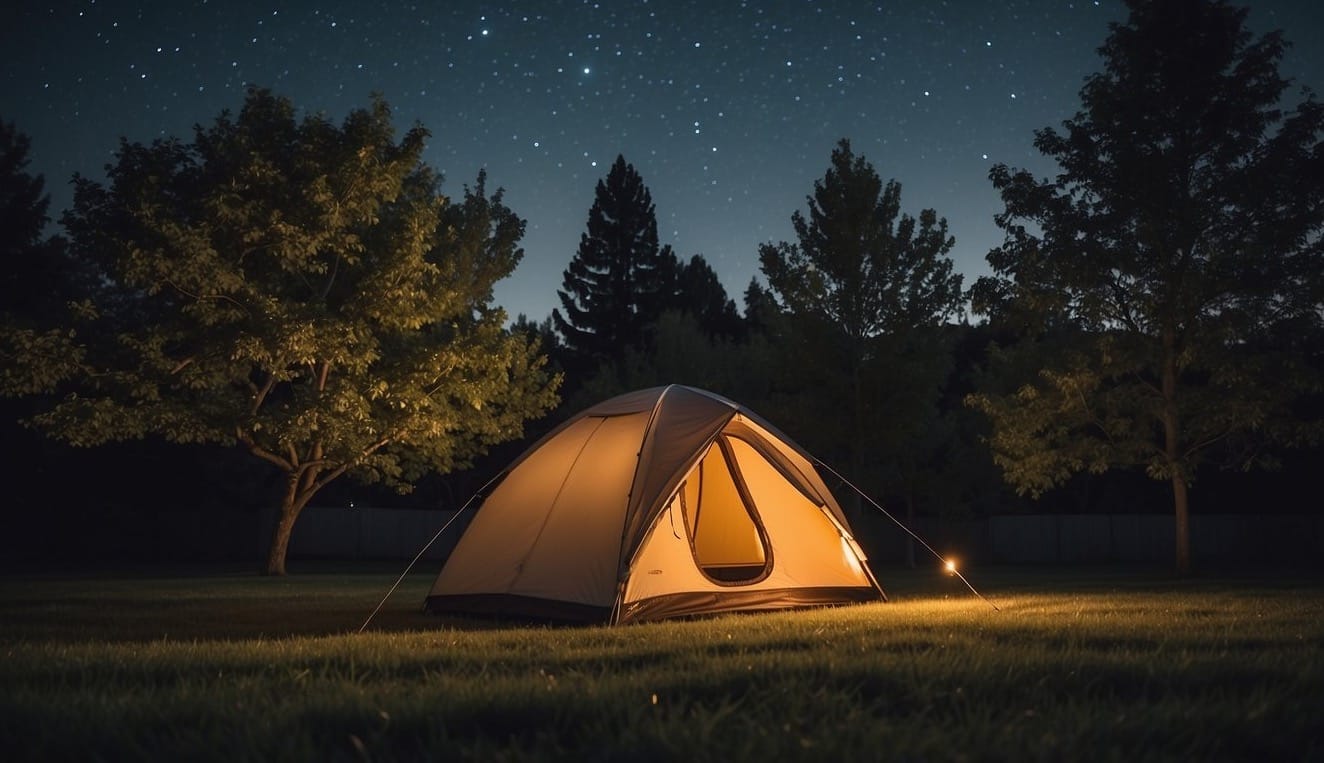
Plan activities to keep everyone entertained, and don't forget about the essentials for comfort, like pillows and blankets.
Key Takeaways
- Backyard camping provides an accessible outdoor experience close to home.
- Proper planning and setup are key to a successful backyard camping adventure.
- Comfort, safety, and leaving the campsite clean are important considerations.
Planning Your Backyard Camping
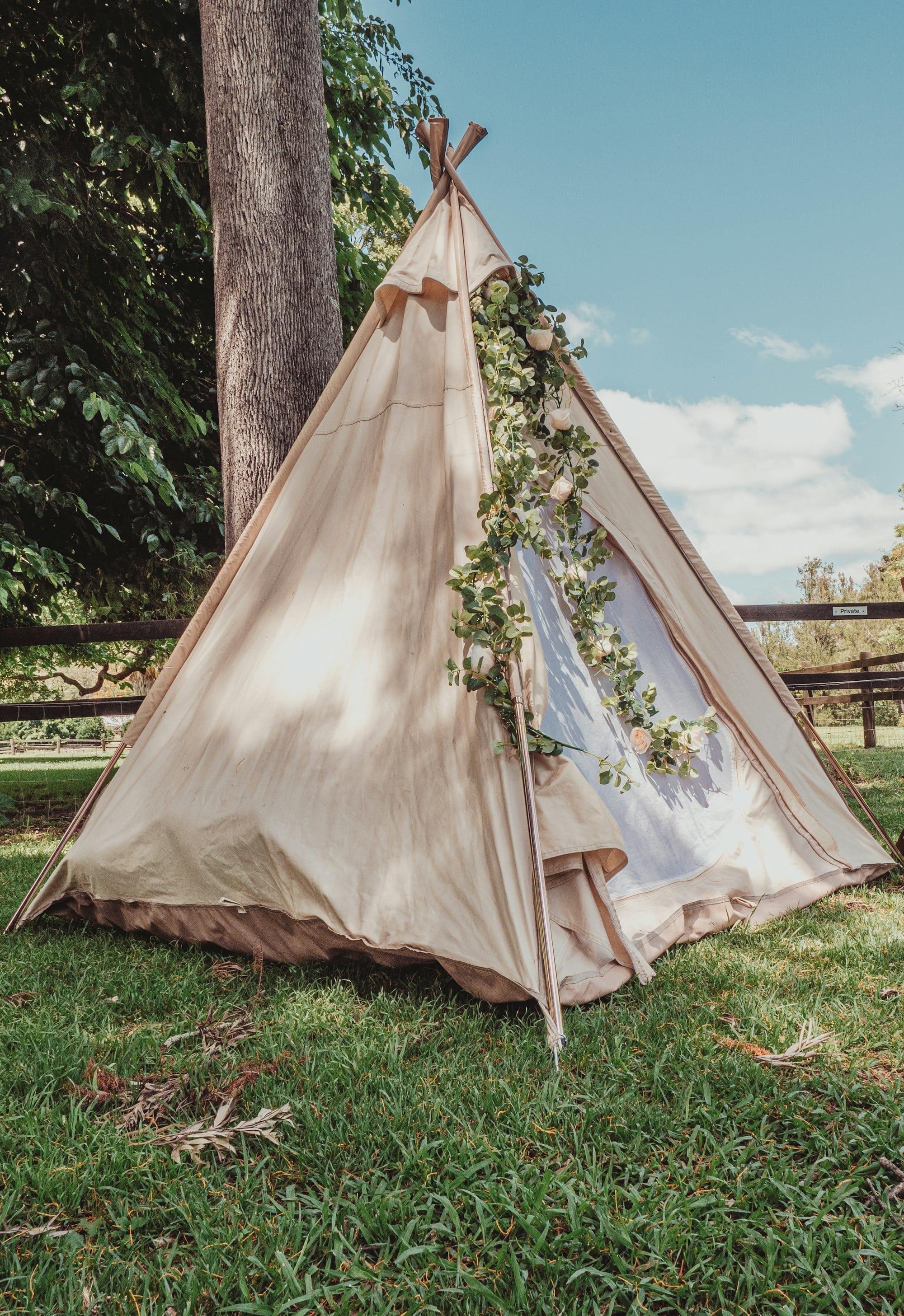
When planning your backyard camping adventure, it's important to have a checklist to make sure you don't miss anything essential:
- Shelter: Set up your tent to ensure you have a comfortable place to sleep. Check the tent for any damage before using it.
- Sleeping Gear: Gather sleeping bags, pads, or an air mattress to keep you cozy. Add some blankets for extra warmth if needed.
Ensure you have easy access to a bathroom. Your house is close by, so bathroom worries are less, but keep a flashlight or lamp handy for nighttime trips.
For your kitchen needs, consider:
- Using a grill or camp stove for cooking.
- Keeping snacks handy for a quick bite.
- Having a cooler to store your perishable items.
Safety is key even when you're close to home:
- Keep a first aid kit ready for any minor injuries.
- If you’re using a fire pit, keep water or a fire extinguisher nearby to handle unexpected flames.
Remember these tips for a successful setup:
- Position your tent on flat ground.
- If you have a fire pit, ensure it’s at a safe distance from the tent.
Setting Up Camp
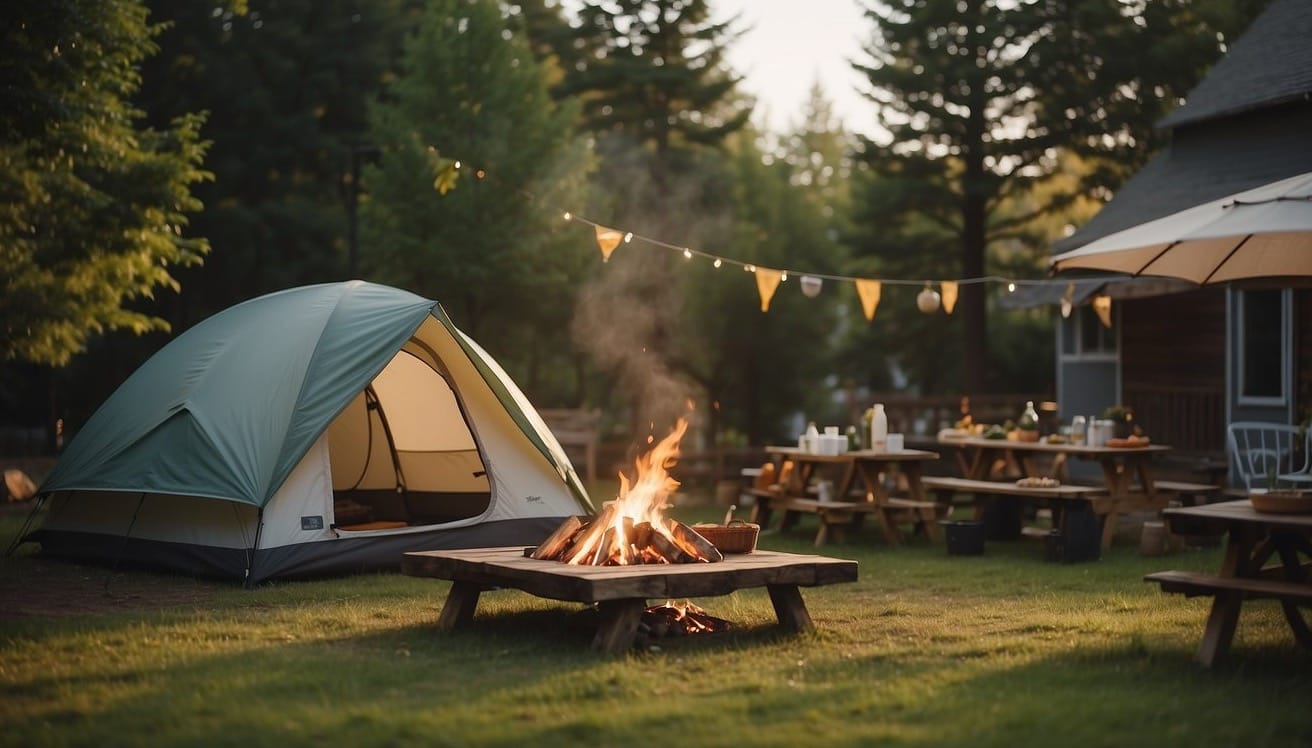
Creating a comfortable and organized space in your backyard for camping requires attention to where you set up, how you set up your tent, and organizing the campsite for the best experience.
Choosing the Right Spot
When selecting a spot for your camping tent, look for a level patch of lawn with good drainage to avoid water pooling.
Ensure the area is free of sharp objects that could damage the tent. If you're setting up under trees, be cautious of loose branches above.
- Safety: Look for a spot away from potential hazards.
- Comfort: Choose a flat surface for even tent flooring.
- Drainage: Avoid dips in the yard where water could collect.
Setting Up Your Tent
A camping tent is your home away from home, so it's crucial to set it up properly. Lay down a tarp first for extra moisture protection. Follow these steps to securely anchor your tent:
- Tarp: Place a tarp under your tent slightly smaller than the tent’s footprint.
- Assemble Poles: Put together your tent poles as per the instructions.
- Secure with Rope: Use rope to tie down the tent, ensuring it's taught and secure.
- Ensure airflow: Double-check that the tent’s vents are not obstructed.
Organizing Your Campsite
An organized campsite can make your backyard camping experience feel more authentic and enjoyable. Here are some quick tips:
- Sleeping Area: Keep sleeping bags and personal items inside the tent.
- Cooking Space: Designate a spot for food prep and eating, away from the tent.
- Gear Storage: Stow gear in a weatherproof container or under a tarp.
- Keep it tidy: Regularly dispose of trash to maintain a clean environment.
Campfire and Cooking Essentials
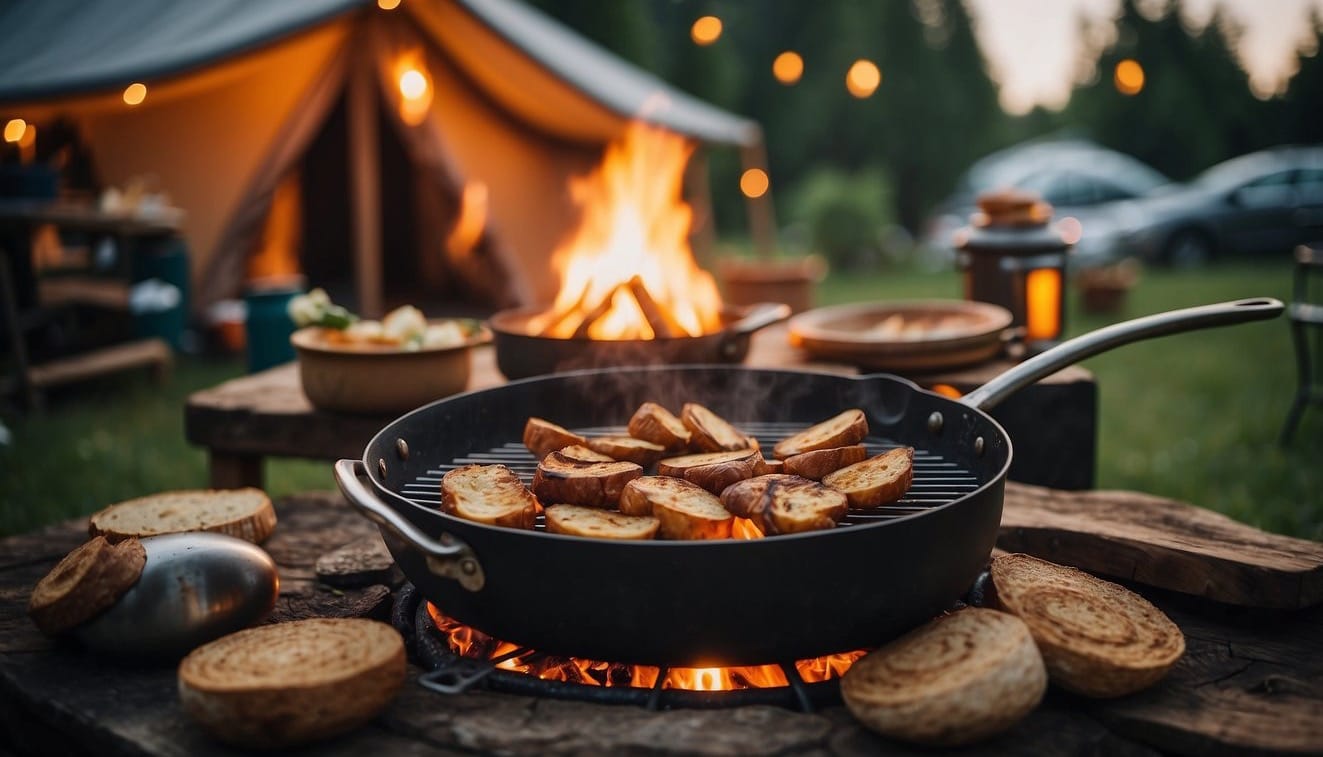
Creating a memorable backyard camping experience involves setting up a safe place to build a fire and knowing the basics of grilling.
You can master various cooking techniques over the campfire to enjoy a delicious outdoor feast.
Building a Safe Fire Pit
Building a safe fire pit is your first step to a successful campfire experience.
Choose a spot away from overhanging branches, and clear a 10-foot diameter area of any dry leaves or debris.
Encircle the cleared area with non-flammable materials like rocks or bricks. This barrier will help contain the fire.
Make sure you have water or a fire extinguisher close by in case you need to put out the fire quickly.
Grilling Basics
For grilling, you will need a sturdy grill grate that can be placed over your fire pit. Start your fire using kindling and small pieces of wood before adding larger logs.
The fire should reach a steady burn with a bed of hot coals before you start cooking. Items like hot dogs, burgers, and foil packets are perfect for grilling.
They cook evenly and are easy to handle with simple tools like tongs or a spatula.
Campfire Cooking Techniques
Campfire cooking techniques vary from simple to complex. Here's what you need to know:
- Skewering: Ideal for hot dogs or marshmallows, it’s as simple as piercing the food on a stick and holding it over the fire.
- Foil packets: Place your ingredients onto a sheet of foil, fold it into a packet, and cook it on the coals for a hassle-free meal.
- Direct grilling: Use a grate for items like burgers or veggies, which involves cooking directly over the hot coals.
Remember to rotate your food for even cooking and watch for flare-ups. Your food, whether it's s'mores or your favorite recipes, will be infused with that distinct smoky flavor that can only come from a campfire.
Camping Gear and Accommodations

Getting a good night's sleep is crucial when you're camping in your backyard, and having the right gear can make all the difference.
Ensure you're prepared for a cozy and stress-free experience with the essentials.
Comfortable Sleeping Arrangements
To make sure you rest well, a sleeping bag suitable for the temperature is a must. If you prefer more comfort, consider using an air mattress.
Add pillows and blankets for extra warmth and snugness. For a more hammock-like experience, a hammock can be hung between two sturdy trees or on a stand.
If the weather is warm, you might just need a light blanket. Here's a quick guide:
- Sleeping Bags: Choose one rated for the current temperatures.
- Air Mattresses: A comfortable alternative to sleeping bags if you prefer bed-like comfort.
- Pillows: Bring one from your bedroom or use a travel pillow.
- Blankets: Essential for extra warmth on cooler nights.
- Hammock: For a relaxing swing-sleep under the stars.
Essential Gear Checklist
Here's a checklist of what you might need to make your backyard camping authentic and enjoyable:
- Tent: A must-have for shelter. Opt for a tent with good ventilation.
- Cooler: Keep your food and drinks cold and safe from critters.
- Lights: Pack lanterns or flashlights to navigate in the dark.
- Clothesline: Useful for hanging wet clothes or towels.
- Additional Gear:
- Chairs: For sitting around the fire pit or just relaxing.
- First Aid Kit: Always be prepared for minor injuries.
- Bug Spray: Keep the mosquitoes and other insects at bay.
Entertainment and Activities

Entertain your family and gather around for a variety of games and nighttime fun that turns a simple backyard camp into an unforgettable experience.
Family-Friendly Games
Backyard Scavenger Hunt: Prepare a list of items for your family to find around the campsite.
Include things like a leaf of a specific shape, a smooth stone, or a feather. The first to collect all items wins a small prize.
- Outdoor Movie Night: Set up a projector and a white sheet to watch your favorite family films under the stars. Ensure to pick movies that are suitable for all ages.
Games Table:
| Game | Equipment Needed | Players |
|---|---|---|
| Cornhole Competition | Cornhole boards and bean bags | 2-4 |
| Water Balloon Fight | Water balloons, buckets | 2+ |
| Frisbee Golf | Frisbees, makeshift targets | 2-4 |
- Guitar Performance: Invite someone who plays the guitar to strum some family-friendly tunes. Sing along or enjoy the music while relaxing by the fire.
Nighttime Activities
Stargazing: After dark, lie on your back and look up at the night sky. If you have a stargazing app or book, try to identify different constellations and planets.
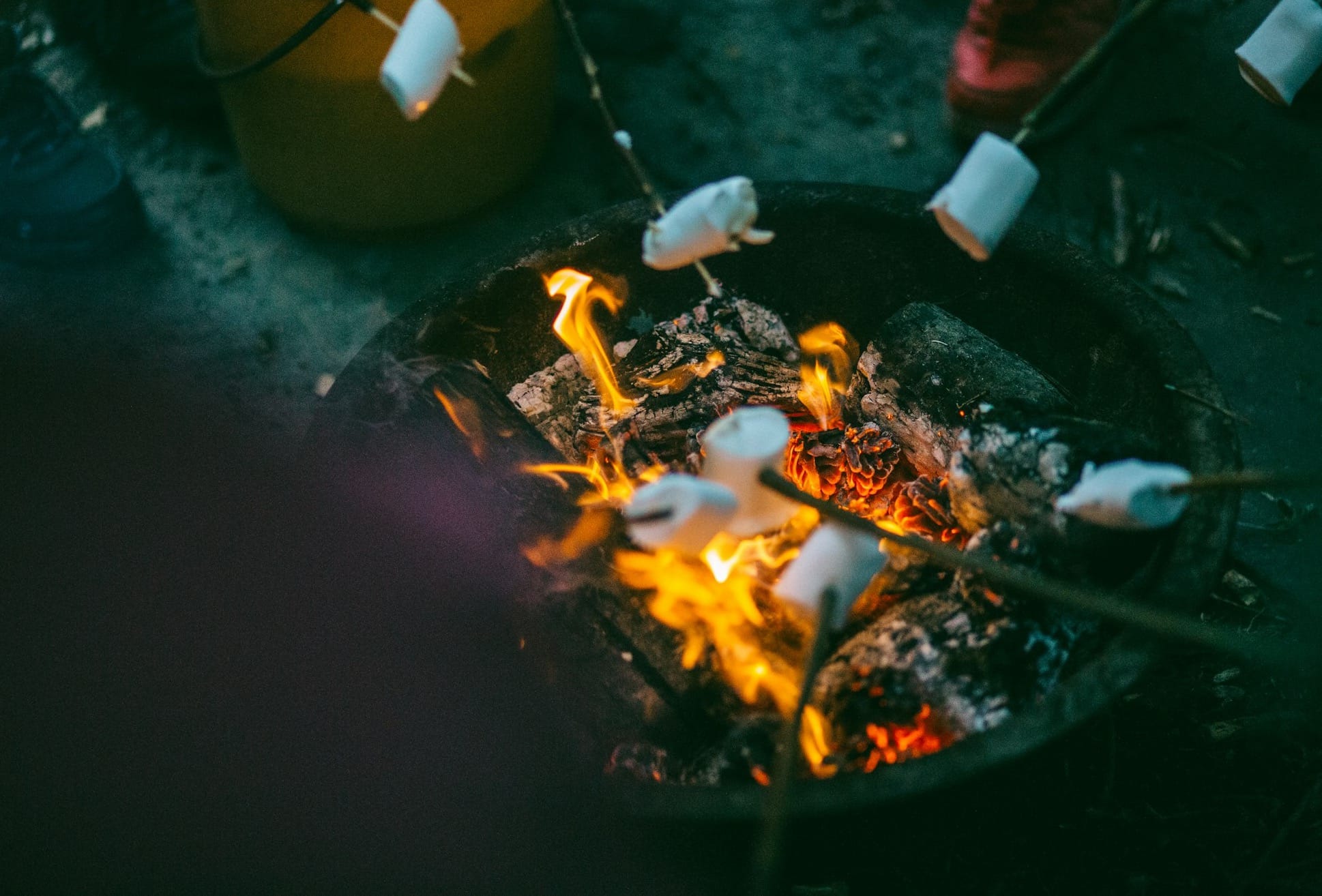
- Campfire Stories: Gather around the campfire to share stories. These could be funny tales from past family events, or you can come up with fictional adventures on the spot.
Scary Stories: For those who enjoy a thrill, share scary stories. Make sure they are age-appropriate so that everyone can still sleep peacefully afterward.
Catering to Comfort with Food and Drinks
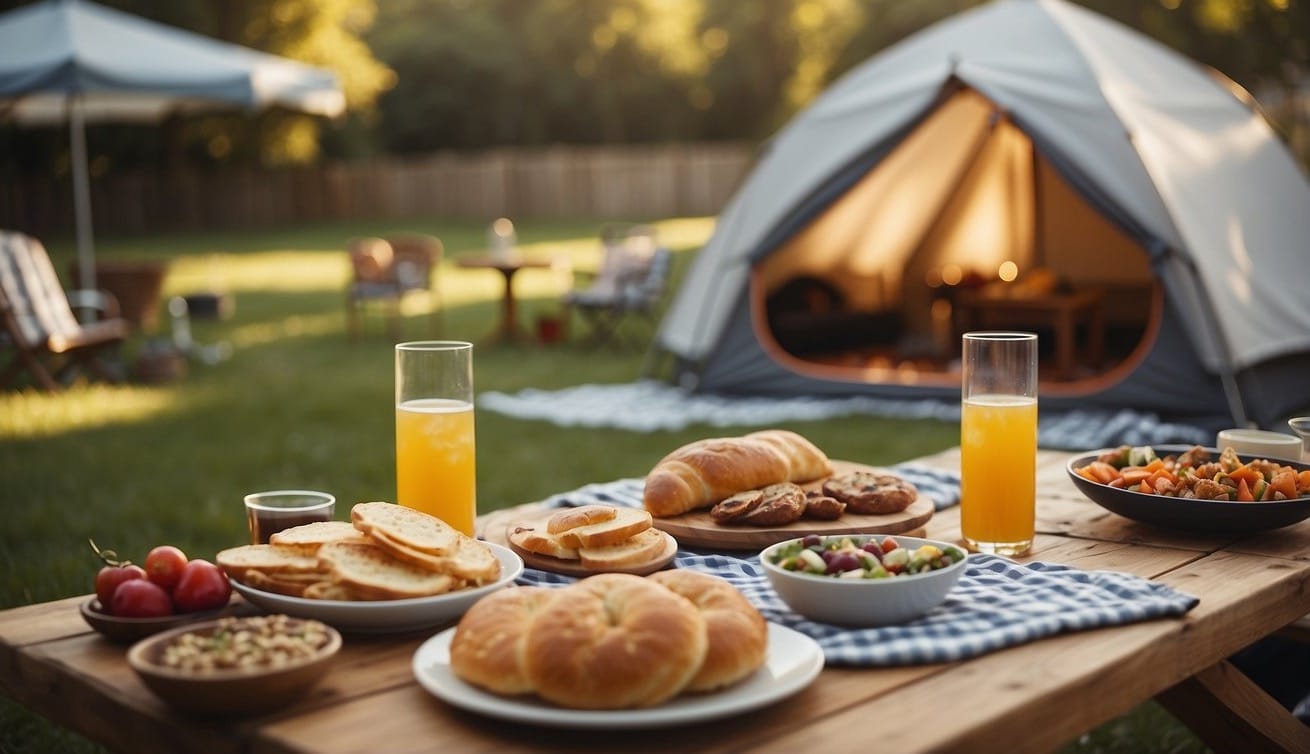
Selecting the right foods and drinks can elevate your backyard camping experience, providing comfort and convenience so you can focus on enjoying the outdoors.
Easy-to-Make Meals and Snacks
When planning your meals, go for options that are simple to prepare and cook. Here's a list of ideas:
- Foil-Wrapped Potatoes: Wrap potatoes in foil with a bit of olive oil, salt, and pepper; add other seasonings to suit your taste.
- Hot Dog Potato Foil Packs: Combine hot dogs, sliced red potatoes, onions, butter, and your favorite seasonings in a foil pack for a satisfying meal.
- Pre-Made Tacos: Prepare salsa and marinade at home (leave out the lime juice). Just before cooking, add the juice to the chicken, then grill your tacos on-site.
Snack Suggestions:
- Sliced vegetables with dip
- Trail mix
- Cheese and crackers
- Fruit skewers
- Granola bars
Refreshing Beverage Ideas
To stay hydrated and refreshed, consider these drinks:
- Cold Water: Always keep plenty of chilled water on hand.
- Lemonade: Prepare a simple lemonade with fresh lemons, water, and sugar.
- Iced Tea: Brew tea beforehand and serve it cold with ice.
- Soda: Keep a variety of carbonated drinks for those who prefer them.
Remember to have both kid-friendly drinks and a few options for adults. Keep all beverages in a cooler to maintain the right temperature.
Safety Measures and Emergency Preparedness
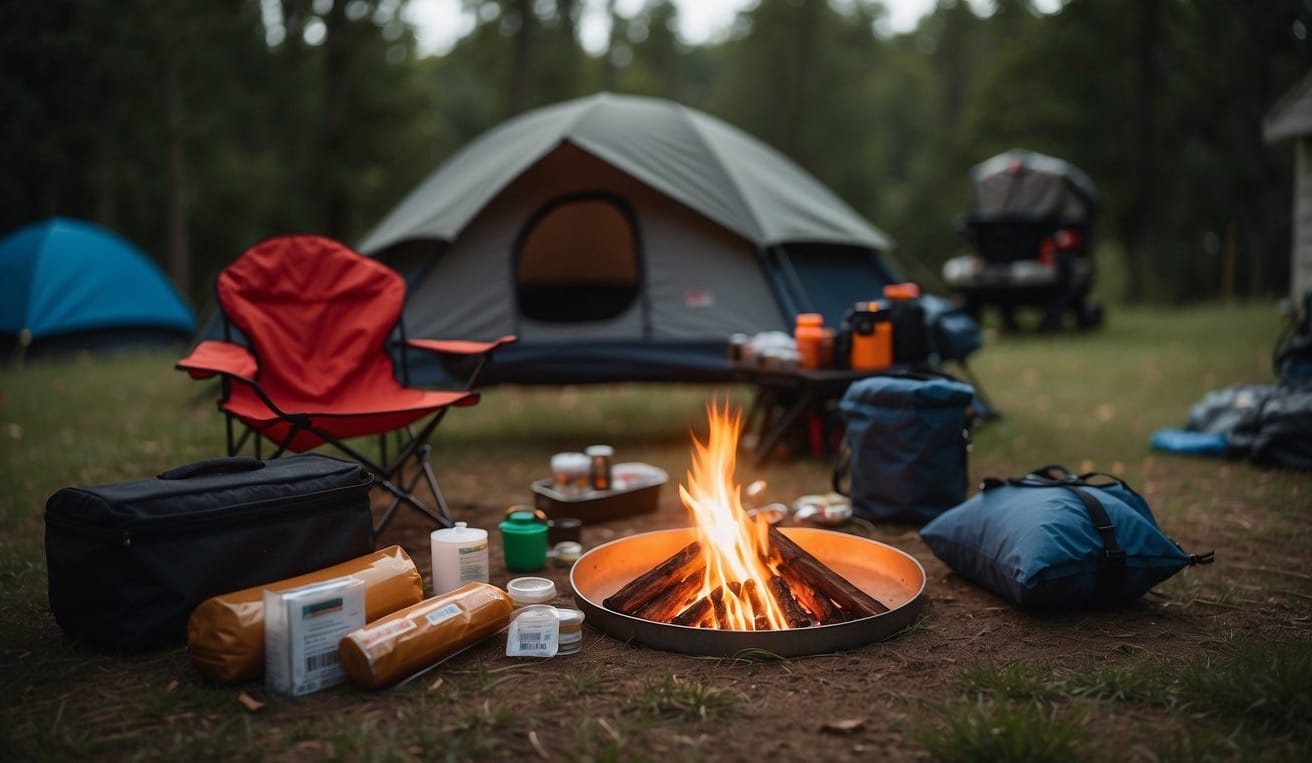
Taking the right safety steps and being ready for emergencies are crucial parts of enjoying backyard camping.
Knowing how to handle accidents and unfavorable weather can make the difference in your outdoor experience.
First Aid and Accident Prevention
Your camping area at home should be equipped with a first-aid kit to treat minor injuries like cuts or scrapes. Here's what your kit should include:
- Antiseptic wipes for cleaning wounds
- Bandages of various sizes
- Adhesive tape
- Tweezers
- Pain relievers, like acetaminophen or ibuprofen
- Scissors
For sprains or twists, remember to rest and elevate the injured limb. Apply a cold pack to reduce swelling.
Prevent accidents by keeping your camping area free of tripping hazards such as loose ropes or stakes.
Insect Repellent: Use it to fend off mosquitoes, which are drawn to dark clothing. Apply repellent on exposed skin and at pulse points where blood vessels are closer to the skin, like wrists or ankles.
Weather-Related Safety Tips
Sun Protection: Even in your backyard, you can get sunburned. Apply sunscreen with at least SPF 30 every two hours, more if you are sweating or swimming.
Wear light-colored, loose-fitting clothes and a hat with a wide brim to protect against the sun.
Wind Safety: Check weather forecasts for wind advisories and set up your tent in an area protected from strong breezes. Secure your tent and any awnings with sturdy ropes and pegs to handle unexpected gusts.
Cleanup and Post Camping

When your backyard camping adventure wraps up, it’s time to focus on leaving no trace behind and preparing your gear for future use.
Effective cleanup and responsible storage practices are crucial.
Responsible Trash Disposal
After camping, collect all trash and dispose of it properly. Separate recyclables from non-recyclables.
Place waste in designated trash and recycling bins. If you used disposable plates or cups, ensure they're recyclable before tossing them in the recycle bin.
Be thorough; even small bits of trash can harm the environment.
- Recyclables: Place in recycling bin (e.g., plastic bottles, paper plates if labeled recyclable)
- Non-recyclables: Place in trash bin (e.g., used napkins, plastic wrappers)
- Organic Waste: Compost if possible (e.g., food scraps)
Following environmental considerations, breaking down your campground with care prevents wildlife from being attracted to leftover food and trash.
Storing Gear Post-Camping
Once all the trash has been responsibly disposed of, turn your attention to your gear. Clean all equipment before storing it to avoid mildew or deterioration.
Make sure everything is dry before putting items away to prevent mold growth. Store your gear in a cool, dry place, like a garage or shed.
- Tents and Sleeping Bags: Air out, clean, and dry completely before folding and storing
- Cooking Gear: Wash and dry all pots, pans, and utensils
- Camping Tools: Clean any soil off of stakes or tools, and store them in a toolbox or storage bin
Frequently Asked Questions
Get ready to set up your backyard for a night under the stars. Here are answers to common questions that will help you prepare for a fun and safe outdoor adventure right at home.
What equipment is essential for backyard camping?
For a backyard campout, you'll need a tent, sleeping bags, and a flashlight. Don't forget comfortable sleeping pads or air mattresses. Also, bring outdoor seating like camp chairs, and a table for meals and activities.
How can adults create a memorable backyard camping experience?
To make backyard camping memorable, include activities such as storytelling, and star gazing. Cook your favorite campfire meals using a grill or fire pit, and infuse the night with the sound of music or nature sounds to set a relaxing ambiance.
What are innovative ideas for family backyard camping activities?
Incorporate a scavenger hunt or nature crafts for children to explore creativity. Setting up an outdoor movie or creating a makeshift obstacle course are fun ways the entire family can engage together.
What should be considered when selecting a tent for backyard camping?
Choose a tent based on the number of campers, the tent's weather resistance, and ventilation features. Ensure it is easy to set up and has enough space for everyone to sleep comfortably.
How do you ensure safety while camping in your backyard?
To stay safe, secure the perimeter of your camping area. Keep a first-aid kit nearby, and if you have a fire, ensure it's in a safe, contained area. Be aware of local wildlife, and store food securely.
What are the best practices for setting up a backyard camping site?
Select level ground free of rocks and debris for your tent. Position the tent entrance facing away from the usual wind direction.
Use outdoor lights to mark pathways. Keep your camping area clean and organized to avoid trips and falls.
